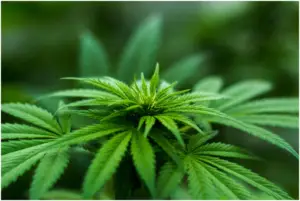Several words are used mutually, but they are not the same. The words Marijuana, weed, pot, and cannabis are different from each other. The term Marijuana refers to the drug that is derived from the dried leaves, flowers, stems, and seeds of cannabis sativa plants. It is a Schedule I substance which consists of at least 540 chemical substances.
However, the term Cannabis refers to a more extensive classification of plants that contain Marijuana. Many people use cannabis plant derivates for recreational and medicinal purposes. This number is increasing day by day.
Marijuana is a common illegal drug used by the people of the United States. Center for Disease Control and Prevention surveyed in 2018 to find Marijuana users. They confirmed that at least 18% of people use it. It is slowly becoming legal in more states nationwide.
What is a Cannabis?
It’s time to introduce you to the term Cannabis. It is a complex plant directly related to the Cannabaceae family. Two main types of Cannabis plant includes Cannabis indica and Cannabis sativa, and several hybrid cannabis plants as well.
Each plant species has a different appearance and impact on the human body. For example, indica plants impact relaxing effects, while sativa plants impact uplifting effects on the human body.
Jordan Tishler, a Harvard Medical School faculty member, participated in a clinical practice conducted by cannabinoid specialist physicians. He confirmed that the chemical differences among the cannabis plant derivatives are unpredictable and primarily overlapping. They concluded that each strain has unique properties. However, this opinion still needs to be confirmed, but it is suitable for marketing purposes.
Read More: What is CBD?

Main Components of Cannabis
Over 100 cannabinoid compounds are found in cannabis plants. Even according to an estimation, their number is more than 500. The most common cannabinoids include:
- Tetrahydrocannabinol (THC).
- Cannabidiol (CBD).
These two are the main ingredients, but there are several supporting compounds. It includes Terpenoids, Flavonoids, Terpenes, etc. In the words of Dr Tishler, the composition of cannabis plants is a mixture of several chemical compounds, and we need to learn each thoroughly.
How can Cannabis be Commonly used?
Users of Cannabis consume it in several ways. The most common forms of their consumption are smoking, eating, drinking, vaping, or topically applying the compounds of plants. Dr Tishler added that if a human bears a hole or a surface on their body, he has to figure out how to stick cannabidiol in there.
Cannabis Effects
The human body has the endogenous cannabinoid system, also called the endocannabinoid system. This system originates inside the body. ECS consists of the following compounds that play a primary role in the synthesis and breakdown of endocannabinoids.
- Cannabinoid receptors.
- Endogenous cannabinoids.
- Enzymes.
Their amount varies in each part of our body. For instance, the brain contains plenty of cannabinoid receptors (CB1 receptors). At the same time, peripheral organs and the gastrointestinal tract have abundant CB2 receptors.
If we illustrate the effects of cannabis, they are primarily intoxicating. That high sensation arises due to the presence of THC, unlike CBD. The Oregon Health & Science University researchers concluded that the amount of THC and CBD determines the degree of energizing, intoxicating, or relaxing effects. By contrast, CBD doesn’t have intoxicating effects.
Read More: Sour Cookies Strain
Cannabis Potential Positive Effects
Latest cannabis research suggests that individual responses to cannabis may vary from person to person. That is why it is specified that don’t use cannabis without the prescription of a healthcare professional. The research has also confirmed that cannabis offers several medicinal benefits for human health conditions.
Dr Tishler revealed that it helps patients to deal with several conditions. These medical conditions are nausea, pain management, anxiety and depression, insomnia, cancer, vomiting (resulting from chemotherapy), and multiple sclerosis. In the given section, we will thoroughly discuss how cannabis assists in treating the above issues.
- Does Cannabis Help to Relieve Chronic Pain?
Several studies were conducted one after another to test the potential of cannabis in relieving chronic pain. One such study by the European Journal of Pain in 2021 discovered chronic pain patients get a 20% reduction in pain intensity after using medical cannabis. They also experience a 42% reduction in their daily dosage of opioids after a year. Many studies suggest cannabis is effective in relieving patients of neuropathic pain.
A study was conducted in Brain Sciences three years back. The study confirmed that medical cannabis reduces the degree of long-term migraine. It also lowers the intake of antimigraine medicines in over 60% of chronic migraine patients. Dr Tishler clarified that cannabis doesn’t give you relief from pain completely but makes it less suffering for you.
- Does it Improve Insomnia?
People suffering from sleeplessness or insomnia used medicinal cannabis to study its impact. And the results were very encouraging. Insomnia patients experience significant improvements in their disease after its use, particularly the indica strain. This confirmation came in 2021 after a study by the Journal of Medical Internet Research.
Also, a random crossover trial took place in 2021 where chronic insomnia patients consumed a nightly sublingual cannabinoid extract for at least two weeks. As a result, they fell asleep more quickly and for a longer duration.
- Does it Decrease Symptoms of Sclerosis?
Besides relieving chronic pain and insomnia, researchers found that daily smoking of cannabis lessens spasticity. It also reduces the pain scores in patients who have multiple sclerosis. Another study in Multiple Sclerosis International was conducted two years back in 2021. It confirmed that MS patients using cbd regularly experience lower levels of proinflammatory cytokines. Their symptoms also reduce more quickly than those who don’t use cannabis.
- Can it Reduce the Frequency of Seizure in Epilepsy Patients?
In 2016, Lancet Neurology conducted a trial where they gave oral cannabidiol to children and young adults suffering from severe, intractable treatment-resistant epilepsy. It was done daily for at least three months. As a result, the patients underwent a 36.5% reduction in their monthly motor seizures.
Two years later, the Food & Drug Administration (FDA) approved the use of Epidiolex (an oral CBD medication) for two rare and acute forms of epilepsy. It is the foremost drug having a cannabis derivative that got approval by the FDA. Lennox-Gastaut syndrome and Dravet syndrome were primarily found in children aged two or above.
- Does Cannabis Improve the Symptoms of Inflammatory Bowel Disease?
Other than the mentioned health benefits, cannabis offers a treatment for people suffering from mild or moderate Ulcerative Colitis. According to a 2021 study in PLoS One, these patients received cannabidiol cigarettes to smoke for eight weeks along with their regular medicines.
These cigarettes contained 0.5 grams of dried cannabis flowers with 80 mg of THC. As a result, they experienced drastic improvements in their ailment and quality of life compared to placebo cigarette smokers.
In 2019, the European Journal of Gastroenterology & Hepatology confirmed in a study that inflammatory bowel disease patients found medical cannabis helpful to treat their symptoms. It also reduced the need for other medicines for almost a year.
Read More: devils lettuce strain red

Cannabis Potential Negative Effects
There are plenty of benefits offered by cannabis, but its use holds several risks. To make it short, we are listing some of the mind-altering effects of cannabis below.
- It increases the risk of accidents.
- It alters your memory and diverts your attention. As confirmed by Dr Tishler, recreational users of cannabis experience depression in Cognitive function.
- It interferes with the brain development in teenagers.
- Lastly, it damages lung conditions and causes respiratory issues after frequent use.
Christopher N. Andrews, a clinical professor of gastroenterology at the University of Calgary, has already threatened the users with its issues due to its long-term use. Such users can develop cannabinoid hyperemesis syndrome, followed by nausea, vomiting, and abdominal pain. He added that some people suffer from it for months even if they stop using it. At the same time, some people suffer from cbd use disorder, in which their brain adapts to ongoing use of the substance.
Is Cannabis Legal Only in the USA or the Whole World?
The legal status of cannabidiol is different in each state of the United States. The use of marijuana is fully legal in some states, while it is legal for medicinal purposes in other states. And it is entirely illegal in the remaining states. It goes the same for the different parts of the world.
As of February 2022, 37 states and four territories of the United States allowed the medical use of cannabidiol products. Its use remains illegal at the federal level, and it is categorize among heroin, LSD, and MDMA (ecstasy) as a Schedule I substance.
Final Words
In conclusion, cannabidiol is a complex plant directly related to the Cannabaceae family, consisting of over 100 cannabinoid compounds. The user consumes it by smoking, eating, drinking, vaping, or topically. Several researches and trials confirm that they offer several medicinal benefits. However, its excessive use is destructive for a user. Also, its legality is different among the various states of the world.



